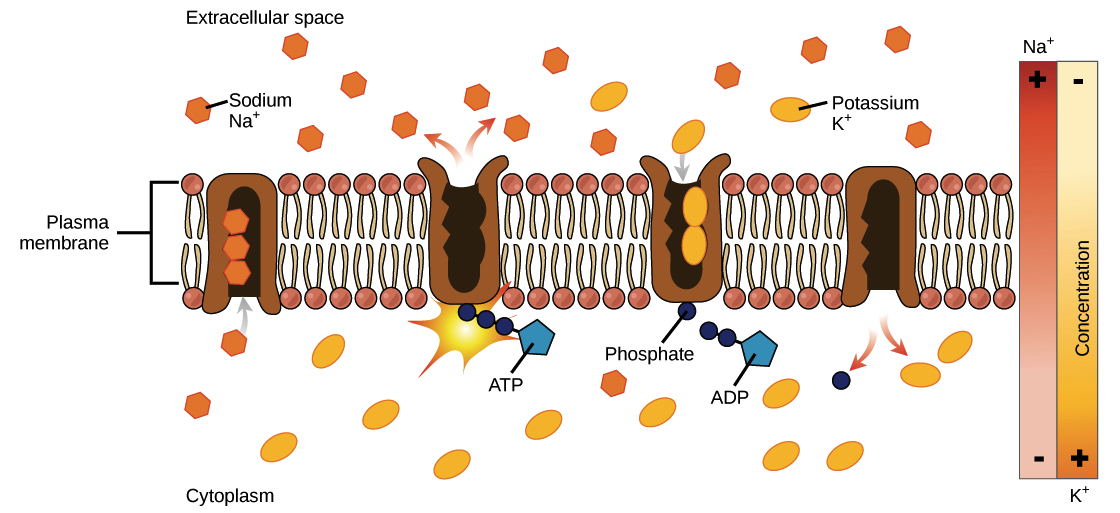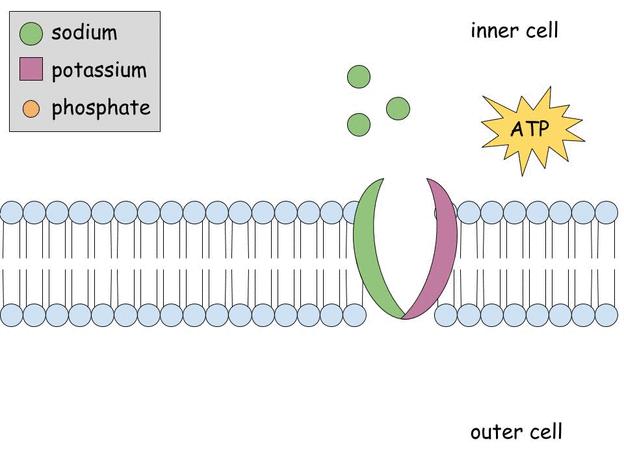Introduction
↪ Bioinorganic chemistry is an branch of chemistry that deals with the role of metal or compounds within biological and biochemical systems.↪ Bioinorganic chemistry is a field that examin...


↪ Sodium-potassium pump (Na-K) pump involves active transport phenomenon.
↪ In this Na+ ions have active transport expulsion from the cell.
↪ And K+ ions have active transport to enter the cell by the absorption of energy released from the hydrolysis of ATP to ADP.
↪ This pump is responsible for maintaining the difference of concentration of Na+ ions and K+ ions inside and outside the cell membrane.
Functioning of the pump
↪ The basic physical component of Na - K pump is the carrier protein which is present being penetrated through the cell membrane.
↪ It facilitates special diffusion.
↪ The carrier protein is a complex of two separate globular protein.
⁕ The mechanism of Na - K pump is explained here by assuming four steps:
Steps 1: In Na - K pump, the carrier protein channel allows to bind 3Na+ ions and 1 molecule of ATP from ICF (cytoplasm).
Step 2: The splitting of ATP provides energy to change the conformation of the channel of carrier protein and 3Na+ enter occupying their sites in the channel.
Step 3: 3Na+ ions are expelled outside the membrane from their sites and 2K+ ion enter from outside (ECF) and occupy their respective sites in the channel.
Step 4: Release of phosphate from the carrier protein changes the conformation of the channel to revert to the original form and 2K+ ions release from their sites and enter inside cell containing ICF.

Importance of the pump
↪ Control the volume of the cell and prevent them from being bursting.
↪ Electrogenic nature that originates electric potential across cell membrane which is the basic requirement in nerve and muscle fibers i.e. it acts as signal transmitter.
↪ Maintain blood pressure, control cardiactric contraction, filter waste products from blood.